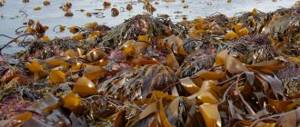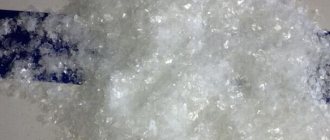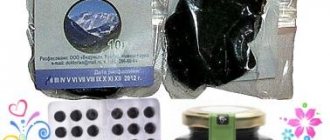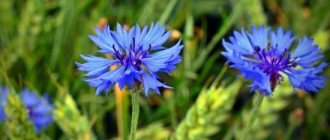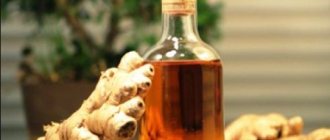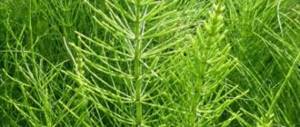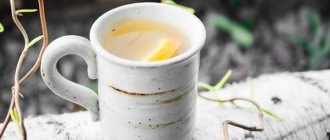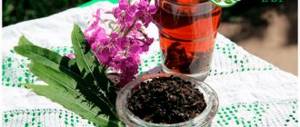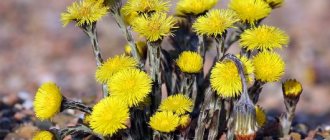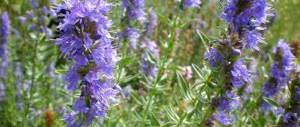Honey is one of the oldest natural sweeteners known to man. Moreover, it is not only tasty, but also very beneficial for our health. Currently, honey is widely used in cosmetology, medicine and cooking. Honey has many health benefits, which is why alternative medicine offers folk recipes for treating many ailments and diseases. All healing qualities are explained by the rich composition of vitamins, minerals and nutrients. First things first.
Chemical composition
Honey contains about 300 components, so the product is unique and extremely healthy.
The treat contains:
- from 16 to 20% water, depending on the type of product;
- up to 80% carbohydrates, which are presented in the form of: invert sugars from 65 to 78% (in flower) and from 60 to 70% (in honeydew), of which fructose from 33 to 42%, glucose from 27 to 36%; disaccharides, polysaccharides up to 10% in the form of sucrose or regular sugar from 5 to 10%, maltose and other disaccharides up to 7%, dextrins up to 2% (in flower), 5% (in honeydew);
- nitrogenous substances in the form of: protein substances - enzymes and free amino acids, alkaloids;
- minerals (sodium, potassium, calcium, magnesium, chlorine, phosphorus, sulfur, iron, zinc, manganese, copper, cobalt, chromium, selenium, molybdenum);
- vitamins (B1, B2, B4, B6, B9, PP, );
- organic acids (gluconic, acetic, butyric, lactic, citric, formic, maleic, oxalic);
- aromatics;
- flavonoids;
- phytoncides;
- hormones;
- lipids.
Important! If the amount of water in honey is more than 20%, there is a possibility that the product will ferment and become unfit for consumption.
–
it will acquire an unpleasant smell and taste, and the surface will become covered with foam.
Honey drinks
Honey drink is an original Russian remedy with healing properties. Even in Ancient Rus' it was used for dessert or as a hop. Until the 17th century, honey was the most favorite drink. Only under Peter I was it supplanted by overseas wines and vodka imported from other countries. Drinks were prepared in two ways: cold and warm.
- In the first option, various berries (raspberries, currants, cherries and others) were added to honey and infused without heat treatment. Such drinks were called put.
- In the second option, honey was subjected to heat treatment. Such drinks were called boiled.
The meads turned out to be strong, intoxicating, and weak, invigorating. Many traditional manufacturing recipes have already disappeared over the centuries, but some have survived to this day. Honey drinks can be prepared at home. They have a tonic effect and strengthen the overall strength of the body. Here are their recipes:
- Sbiten. Hot sbitni is a traditional Russian drink. It is better to prepare them without adding sugar, using medicinal herbs of your choice (chamomile with mint or St. John's wort, currant and raspberry leaves, lingonberry and sage leaves). But other medicinal plants can be used, depending on the type of disease present. To prepare sbiten, you need to take 1 teaspoon of the necessary medicinal raw materials and pour 2 cups of boiling water, leave for half an hour. Then strain through several layers of gauze or a strainer. Add 1 tablespoon of honey to the resulting solution and stir until completely dissolved. The resulting sbiten must be drunk hot. In this form it is most aromatic and tasty. In addition, it is unusually rich in vitamins and nutrients.
- Spicy honey. To prepare the drink you will need: 2 liters of water, 30 grams of yeast, 200-250 grams of natural honey, 10-20 grams of pepper, cinnamon and ginger to taste. Place the pan with honey on low heat and heat until it boils, skim off the resulting foam. Then add hot water and spices and mix. The resulting mass must be boiled well. After this, cool the honey mixture, add yeast and pour into a glass container (bottle) without a lid. Place in a warm place for 12 hours. We cork the bottle of honey drink and store it in a cold place for 2-3 days.
- Honey drink. To prepare it we need 750 ml of water, 250 g of honey, 5 g of yeast, a quarter of a lemon. Dissolve honey in hot water and cool to 25 °C. Then add yeast and juice of 1/4 lemon. Place the resulting mixture in a warm place for 10-12 hours. The finished honey drink must be filtered and drunk chilled.
- Cranberry honey. You need to take 250 g of natural honey, 2 liters of water, 0.5 liters of cranberry juice, 30 g of yeast, cinnamon and cloves to taste. Mix water with juice and put on low heat. Immediately add honey and stir well. Heat until boiling, do not forget to remove the foam. Then cool, add yeast and spices. Pour into a bottle without a lid and place in a warm place for 2 days. After this, seal the glass container. The bottle needs to be kept in the cold for another 2-3 weeks. Pour the cranberry honey into bottles, close the lids tightly and store in a cool place. Drink the finished drink chilled.
What are the benefits of honey?
Everyone knows that honey is a healthy product, but it’s worth taking a closer look at what benefits the body receives from consuming this delicacy.
For the immune system
Thanks to its rich chemical composition, the delicacy stimulates the immune system and helps strengthen a weakened body. The bee product allows you to maintain good health, is a good prevention of viral and colds, and accelerates the recovery process for existing health problems.
For the gastrointestinal tract
The product has a positive effect on the stomach and digestive system by normalizing acidity levels, accelerating the healing of wounds and ulcers, and effectively eliminating inflammation in the gastrointestinal tract. Elimination of pain is possible thanks to the natural content of the antibiotic.
By taking a treat, you can achieve a mild laxative effect and improve the general condition of the intestines, remove toxins from the body, harmful compounds and heavy metals, and improve metabolic processes.
For the treatment of the gastrointestinal tract, zabrus, spirulina, black rowan, potato juice, chaga mushroom, propolis, meadow clover, hyssop, milk thistle are used
For the cardiovascular system
Due to the high content of glucose and simple sugars, the product improves the functioning of the heart muscle. Honey is indicated for people who suffer from coronary disease, myocarditis, cardiosclerosis, arrhythmia, hypertension and other cardiovascular diseases.
The product helps lower blood pressure, improves the condition of blood vessels, for example, regulates capillary tone and maintains normal wall permeability, and has a positive effect on the myocardium.
For hypertension, it is recommended to use beet juice, beets, unabi, cranberries, a decoction of sea buckthorn leaves, chokeberries, cherries, bee bread, feijoa, and physalis.
For the brain
The benefits of the treat for the brain are due, first of all, to the high content of carbohydrates, which allow you to quickly restore strength after mental stress. After consuming a bee product, tryptophan is converted into the hormone serotonin, which improves mood, stabilizes the emotional state, increases attentiveness and the ability to perceive information.
Iron ensures the functioning of the left hemisphere of the brain, which is responsible for logical thinking.
Important! Dark varieties of honey contain the maximum amount of iron, especially buckwheat.
Choline stimulates the functioning of nerve endings and cells and is necessary for short-term memory. Low levels of choline in the human body can lead to absent-mindedness, forgetfulness and insomnia.
For the nervous system
Omega-3 and calcium, which are contained in the bee product, can improve the performance of basic functions of the nervous system. Bee delicacy also helps strengthen nerve cells. The high content of glucose and fructose, interacting with vitamins and mineral salts, helps restore high-quality cell nutrition, enhances oxidation processes, reduces the excitability of nerve endings, improves sleep, and reduces irritation. Thanks to its calming effect, the product helps prevent the development of nervous disorders.
For the genitourinary system
The use of the product has a positive effect on the genitourinary system and allows you to cure nephritis and cystitis. Its benefits for men are especially highlighted. The delicacy allows you to improve blood circulation in the urogenital tract, therefore it helps well in the treatment of acute and chronic forms of prostatitis and the first stages of prostatic hyperplasia.
Find out more about the beneficial properties and uses of bee products: bees, bee bread and pollen, royal jelly, dead bees, propolis, honey with propolis.
For bones and teeth
Honey is an excellent product for the prevention of dental diseases; it allows you to cope with caries if you use this product in conjunction with other measures prescribed by a specialist. Some people make a treat-based solution to whiten their teeth. The product allows you to get rid of the inflammatory process, reduce the sensitivity of the surface of the gums, thereby preventing their bleeding. Thanks to its analgesic properties, the bee product relieves toothache.
The high calcium content in honey allows you to make bones stronger, promotes rapid recovery from rheumatism and joint pain, and is a prevention of bone flu and tuberculosis, inhibition of bone growth and osteoporosis.
Important! It should be remembered that tooth pain is a symptom and not an independent problem, so you can use treats as a pain reliever only until you see a doctor to solve the problem and eliminate the root cause of the pain.
For skin and hair
Honey is a good way to cleanse the skin of excess oil, eliminate dark spots, sebaceous plugs and other impurities. Treat-based masks protect cells from moisture loss, eliminate signs of flaking and dryness, and prevent the appearance of wrinkles. Thanks to the improvement of metabolism in the body and the high content of necessary enzymes, metabolic processes in the subcutaneous layers are stimulated, which stimulates the synthesis of elastin and collagen, restoring damaged areas of the skin. Formic acid and sugar contained in the bee product can have a bactericidal effect on the skin and allow the product to be used in the treatment of skin diseases, scratches and other damage.
Hair needs microelements such as sulfur, calcium, zinc, manganese, iodine, B vitamins, amino acids, proteins and other useful components that are present in large quantities in honey. That is why this product is often used in hair treatment, which makes it elastic, shiny, and accelerates growth processes.
To rinse your hair, you can use infusions of sage, oregano, thyme, lovage, kombucha, and apple cider vinegar solution.
For a youthful body
Thanks to the rich biochemical composition of the delicacy, it allows you to enhance regenerative processes in the body, remove damaged cells and replace them with new ones at an accelerated pace. In this way, well-being improves, health improves, the body’s resistance to disease increases, weight normalizes, skin condition improves, thereby the body becomes healthier and rejuvenates.
Honey in cosmetology
Honey is often used in cosmetic preparations, as it softens the skin, improves its tone, and eliminates dryness and flaking.
Honey in cosmetology is used as part of masks for the face and hands. These masks serve to prevent wrinkles, cleanse, moisturize and rejuvenate the skin.
Honey is also included in shampoos and hair conditioners. Honey massage, which improves blood circulation, is very popular among women.
Top 10 species
There are many types of honey, but let's look at the most useful and popular ones.
Did you know? In order to produce 100 g of honey, a bee needs to process more than 100 thousand flowers.
Acacia
The acacia product is an exquisite type and cannot be confused with any other honey. It has a fragrant aroma, reminiscent of an acacia flower with a delicate, pleasant taste. External characteristics depend on the type of acacia where the pollen was collected.
The acacia delicacy is transparent, and during crystallization it acquires a fine-grained consistency and white color. Crystallization is slow and remains in a liquid state for a year, which is associated with a low sucrose content and a large amount of fructose.
Acacia honey is very tasty and aromatic, we recommend that you learn its characteristics and beneficial properties.
Cornflower
It is almost impossible to find a variety of cornflowers in its pure form; it always contains some admixture of nectar from the flowers of other plants, since pure cornflower meadows are quite rare. The cornflower delicacy has a slight almond smell, which is not similar to the smell of ordinary honey, it is characterized by a slightly sugary taste, after consumption, bitterness remains in the mouth, and a soreness in the throat. It has the lightest color with a slight greenish tint.
The delicacy contains a large amount of fructose, so the product remains in a liquid state for a long time; crystallization begins 3 months after pumping.
Buckwheat
Buckwheat honey can be easily found on sale. The product is characterized by a pleasant odor reminiscent of buckwheat flowers. Due to the fact that the product contains many minerals, its color is quite dark - from amber to rich brown, often with an orange tint. This variety has a sugary taste, with a spicy, tart aftertaste; after eating it, a bitter taste appears in the mouth and a soreness in the throat.
It is characterized by fairly rapid crystallization, since the amount of glucose in the product is higher than fructose.
Find out the benefits and benefits of buckwheat honey
Dyagilny
The angelica delicacy has a rather sharp, rich, but at the same time pleasant aroma, characterized by a specific taste, with slight bitterness and caramel notes. After consumption, a candy aftertaste remains in the mouth. The color can vary, ranging from brown-red to deep brown, in some cases there is a greenish tint.
This product remains in a liquid state for a long time; in early spring it acquires the thickest possible consistency with very small crystals.
Read what angelica honey is used for and what beneficial properties it has.
Chestnut
The taste of chestnut sweetness cannot be confused with any other honey; it is quite bright, and after consumption there remains an astringent, bitter aftertaste. The color is as dark as possible, rich with a reddish tint. Not everyone likes the smell; it is quite tart and pungent, and does not at all resemble the pleasant aroma of blooming chestnuts.
The product has a very liquid consistency, but remains in a liquid state for a long time; small crystals form only in the second year of storage.
Find out more about the benefits of chestnut honey for the human body.
Crimson
Raspberry honey is not very common on sale, but it is one of the most delicious types. The aroma is very reminiscent of raspberries, very delicate and pleasant. The product has a beautiful light golden color.
The nectar tastes sweet, but not cloying and not bitter. Crystallizes after 2 months after pumping, acquires a thick consistency with small crystals, soft cream color.
White honey is obtained from oregano, clover, rose hips, acacia, raspberries, sweet clover and others.
Lime
Linden honey is one of the most common types. The product is characterized by a rich linden aroma that cannot be confused with anything else. The color is slightly yellowish, sometimes with a greenish tint.
There is a bitterness in the taste, but the aftertaste is always pleasant. Crystallization occurs after 6 months after pumping; the sugaring process is quite slow. The color of the crystallized delicacy may take on a white or golden hue.
We advise you to find out what properties linden honey has
Dandelion
Dandelion honey produced by bees is not found in nature in its pure form, so a jam called honey is made from dandelions. This is due to the fact that the product turns out to be very similar to bee product, rich yellow in color and quite thick in consistency. This delicacy has a characteristic pleasant aroma of dandelion flowers, a sweet but not cloying taste.
Sunflower
Sunflower honey is characterized by a bright yellow color, which over time can acquire a mustard or golden hue. The taste is quite sweet, with light fruity notes and a tart aftertaste.
The aroma is floral, sophisticated, fresh. The product crystallizes very quickly, at which time a white crust appears on the surface, which is due to the large amount of glucose in the composition.
You will probably be interested in learning how to use sunflower honey for medicinal purposes.
Pumpkin
Real pumpkin honey is characterized by a bright yellow color, not cloyingly sweet and very aromatic, without bitterness or astringency in the aftertaste.
Did you know? To obtain pumpkin honey, beekeepers resort to cunning, taking entire apiaries to the endless blooming melon fields where pumpkin grows. Such measures are necessary to force bees to work specifically on pumpkin flowers, and not fly to other plants. Bees, if they have a choice, prefer other honey plants, due to the fact that very little nectar is obtained from pumpkins.
Since most people do not have access to real pumpkin honey, it is prepared at home. The result is a product with fairly high taste characteristics, although it differs in taste and aroma from real pumpkin honey.
Composition of honey and its features
Honey is rich in vitamins, contains more than 40 types of different carbohydrates, proteins, as well as microorganisms beneficial to humans.
Honey is not only a natural resource, but also a biochemical mixture of complex chemical compounds (about 300 different substances). Its main components are:
- proteins;
- amino acids;
- various carbohydrates (up to 40 varieties);
- vitamins (mainly group B: B1, B2, B3 and B5).
The microflora of this unique product is mainly represented by different types of yeasts and fungi - up to 1000 microorganisms in 1 kg of natural honey.
When someone talks about honey, you immediately want to try it. In our imagination we see a viscous yellow mass with a pleasant sweet taste and enchanting aroma. According to its consistency, the bee harvest is:
- liquid or flowing (for example, obtained by striped workers from white acacia and fireweed);
- viscous (collected by insects from heather and tamarisk).
Such properties directly depend on the chemical compounds of the natural product, its temperature and condition. Honeydew honey is most often viscous.
After the bee harvest, an irreversible crystallization reaction (cage) begins. There are two types of honey:
- slow landing;
- quick boarding.
If the beekeeper was in a hurry and collected the unripe product, then a watery layer of settled moisture is formed above the resulting crystalline mass due to the high concentration of liquid. The same processes occur with honey under incorrect storage conditions. This bee product is devoid of many beneficial properties.
Slow fermentation includes honey with:
- white acacia;
- sage;
- chestnut;
- heather;
- most honeydew varieties.
Bee product collected from:
- dandelion,
- rapeseed,
- mustard,
- sow thistle,
- rapeseeds.
Composition of honeydew honey
Honeydew honey contains enormous natural wealth. This variety is different from its flower counterpart. The color of honeydew honey varies from light amber to almost black, the aromatic properties are weak and unexpressed. And this variety is inferior in taste to the flower variety.
Not everyone’s favorite sour taste may be repulsive. Nevertheless, the healing capabilities of honeydew honey are several times greater than those of flower honey. In terms of the quantitative composition of amino acids, this is double or even triple superiority. The content of microelements in honeydew honey is also much higher:
- potassium – 13 times;
- phosphorus – 8 times;
- chlorine – 5 times;
- calcium – 3 times.
High concentration of manganese, iron, cobalt, magnesium, silicon and sulfur.
To summarize the above, one simple truth can be understood:
If you do not pay attention to the weak aroma, unusual taste and not always attractive color, then you can confidently classify honeydew honey as a healthy dietary product with pronounced medicinal properties.
In any bee family, work is in full swing, each insect performs its function. The queen bee, drones, worker bees, larvae and pupae are unable to exist without each other. Honey is exactly the same. Its unique composition is like a big family in which there are no separate elements. No laboratory scientist has yet been able to reproduce this relationship the way striped workers do.
How to use it in cooking
Honey is a fairly popular product and is used to prepare various dishes. The delicacy is especially often used to prepare a variety of desserts - cakes, gingerbreads, pastries, sweets, and cookies. Honey is used to replace a less healthy product - sugar - to ultimately make a healthier dish. Pastilles, nougat, creams, mousses, puddings, and jellies are prepared with the delicacy.
Honey is used to marinate various types of meat and poultry, forming a delicious crispy chicken after baking or frying, giving the dish a unique aroma and sweetness. Delicious sauces are prepared on its basis, which are served with meat, poured over salads and appetizers. Many delicious cocktails, both alcoholic and non-alcoholic, are prepared with the delicacy; it is added to lemonades and milkshakes.
Sugaring, i.e. crystallization
After long-term storage, natural honey crystallizes - glucose and sucrose form crystals. This process is called sugaring and is natural.
Barberry crystallized honey
A product containing 20% water or less always crystallizes evenly. Well, honey with a high moisture content after sugaring is divided into fractions. Therefore, it is called “immature” - after crystallization, fermentation processes begin in it.
To increase the maturity of honey artificially, it is sometimes evaporated. The product is kept for several hours in a water bath, keeping the temperature within 50-60 C. The problem is that some of the beneficial properties are lost already at 51 C. The method discussed is used before packaging.
You can understand the sellers who use “evaporation”: the crystallization period for some varieties is two weeks or a month. Let's name 4 varieties for which this property is typical: dandelion, sunflower, rapeseed, sainfoin.
Sainfoin nectar product
Only sainfoin honey will provide noticeable health benefits - it restores hormonal balance. The other 3 grades are considered “low”.
How much can you eat per day
In order to benefit from the treat, it is recommended to take 1 tsp. twice a day - in the morning, on an empty stomach, mixing with water and in the evening, before bed.
The maximum amount of honey that can be consumed per day without harm to health and figure is 100 g. It is better to divide this portion into several doses. It is recommended to give children no more than 50 g per day. It is better to consume honey an hour before meals.
Important! The product should not be diluted with boiling water, as it may lose its beneficial properties and will also begin to release harmful substances that can be harmful to health.
Different varieties of honey and their healing properties
Meadow honey
The color of this variety varies from not pronounced yellow to pale brown. The taste is pleasant and delicate. Meadow honey has a unique fragrant aroma, which combines combinations of various wildflowers. This healing product must be taken by people with diseases of the digestive tract.
To prepare a medicinal drink, you need to take 200 ml of pure fresh (preferably boiled) milk and stir 1 tablespoon of meadow honey in it. Drink warm 3 times a day.
- For those who suffer from gastritis with high acidity, 1.5-2 hours before meals.
- For people with inflammatory bowel diseases (enteritis and colitis) - on an empty stomach, before lunch and dinner.
For persons suffering from intolerance to whole milk and dairy products, it is better to take a decoction of rose hips as a medicinal solution, followed by the addition of honey. The course of therapy should be continued for 1.5-2 months.
Forest honey
It has darker shades of colors, unlike meadow. It does not have a very pleasant aroma and tart taste. This product helps well with sleep disorders, in particular insomnia.
To prepare a natural medicine, you will need the juice of one lemon and 100 grams of forest honey. Stir everything and take 1 tablespoon at night every day until the symptoms of insomnia disappear. The lemon-honey mixture should be sucked like a lollipop until completely dissolved. Warm tea or milk can be drunk only half an hour after consuming the healing product.
Heather honey
Heather honey has pronounced anti-inflammatory properties and is successfully used in the complex treatment of bronchial asthma.
It has a rich yellow color with a pronounced reddish tint. Heather honey is characterized by a bitter taste and astringency. But the anti-inflammatory properties are excellent. This type of honey is very useful for patients with bronchial asthma. Effective recipes for medicinal mixtures:
- Honey should be diluted in distilled water in a concentration of 1:2 (for example, 25 g of honey and 50 ml of water). Stir the resulting solution well and take 20 ml from the finished mixture. This volume is necessary for inhalation. It is recommended to carry out the procedure twice a day, for at least 20 minutes each. The course lasts for one month.
- Prepare a herbal drink from red clover flowers in a ratio of 1:20 (pour 10 grams of herbal mixture into 200 ml of boiling water, let it brew for 15-20 minutes). For oral administration, use 1/3 cup of medicinal solution with 1 dessert spoon of honey dissolved in it. The healing drink should be drunk for 1.5-2 months 3-4 times a day.
Buckwheat honey
It differs from other varieties in its reddish-brown color, enchanting aroma and unique taste. Buckwheat honey is most popular in terms of preventing the development of atherosclerosis.
To obtain a medicinal mixture, mix onion juice with honey in a concentration of 1:1. This product should be taken 1 tablespoon at least 3 times a day for a month.
The patient's condition should improve during follow-up.
Linden honey
It has a fragrant aroma and amber-yellow color. In a liquid state, honey is transparent and watery; as a result of natural setting, it acquires coarse grains and a whitish tint. This variety has been used since ancient times for:
- colds;
- inflammation of the bronchi;
- pneumonia.
The most effective recipe: you need to dilute plantain juice with linden honey in a concentration of 1:1 (100 ml of juice and 100 g of honey). Use the medicinal solution before breakfast, lunch and dinner in the amount of 1 tablespoon per dose. The course of therapy is for 1 or 2 weeks.
Fruit honey
This variety is obtained from the nectar of fruit trees during the flowering period. It has a light amber color and a very light and delicate aroma with a wonderful taste. Fruit honey is extremely useful for people with coronary heart disease.
To prepare a medicinal product, you need to take a glass of rosehip juice and 200 grams of honey. Mix everything. Take the resulting mixture one teaspoon three times a day, preferably half an hour before meals.
Thus, the use of honey for medicinal purposes is justified. This unique product alleviates the condition of patients with various processes and accelerates the recovery period. That is why the scope of its application is so wide:
- diseases of the liver, gall bladder and ducts;
- cardiovascular pathology;
- inflammation of the respiratory system;
- disorders of the genitourinary and gynecological system.
How to choose and identify a fake
Unfortunately, commercially available honey is not always a natural product. Very often there is a craft product on the shelves, which at first glance is quite difficult to distinguish from a natural product, so let’s look at the main nuances in choosing honey in order to buy the highest quality and natural honey.
Approximately
When choosing honey, pay attention to the container in which the delicacy is located; it must be airtight . Store-bought products must contain information about the place and date of collection, they must have a certificate that will guarantee quality, so carefully study the label before purchasing. Inspect the contents of the container, it should be homogeneous, not delaminate, and there should be no white film or light streaks on the surface.
If you purchase a treat at the market and have the opportunity to try and smell the product, be sure to take advantage of it. The smell of honey should be pleasant, without signs of souring. The taste of the product should be characteristic, without foreign impurities that worsen and change the taste of the natural delicacy.
Using improvised means
Unscrupulous sellers often mix sugar syrup, starch, flour, chalk and other ingredients into the delicacy in order to pass off a cheaper type of honey as an expensive one, or to disguise a low-quality product.
You can determine the presence of sugar syrup in a treat using distilled water and methyl alcohol. To do this, mix 1 tsp. honey, 4 teaspoons of distilled water and 1.5 tablespoons of methyl alcohol. If as a result a yellow-white sediment forms at the bottom, this is a sign of added sugar.
To detect the presence of starch or flour in a product, you need to mix honey - 1 part, water - 2 parts, drop a couple of drops of iodine into the solution. If the mixture turns blue, this is a sign of the presence of excess impurities.
The poor quality of the product can be determined using regular milk. For this, 1 tbsp. l. the treats are stirred in 200 ml of boiling milk and if the liquid curdles, then you have bought a counterfeit product.
You can drop the treat onto a piece of paper and carefully observe the drops of honey. If it starts to spread and leave wet marks on the leaf, then this is not real honey.
You can determine the presence of chalk in a treat using vinegar. Mix 50 ml water, 1 tsp. honey and add 1 tsp. vinegar. If a chemical reaction occurs, this is a sign of the presence of chalk.
Honey storage conditions
In order for honey to delight us with its aroma, pleasant taste and healing properties for as long as possible, we need to take care of proper storage. It is necessary to select an appropriate sealed container. It must be clean and dry, without cracks or chips. It is also important to know that not all materials are suitable for storing honey. The most acceptable are:
- wood (for example, beech, birch, willow, aspen, alder, cedar, plane tree);
- glass;
- glazed food ceramics.
Metal containers must be selected very carefully. You can store the healthy product in containers made of stainless steel and food-grade aluminum and under no circumstances use galvanized, copper or iron utensils. These metals can react chemically with the acids contained in honey, resulting in the formation of toxic compounds.
Also, not all tree species are suitable for storage:
- Oak barrels change the color of honey to black.
- Coniferous wooden containers distort the taste and aroma properties of a unique product due to the resins they contain.
That is why the container for honey is used from materials that do not release moisture, do not corrode and do not emit coloring or odorous substances.
However, the best storage is a cell. They serve the bee family faithfully for a very long time, only darkening a little over time. Honey is stored in them for several decades and does not spoil.
It is also important to observe temperature conditions:
- If the water content of honey exceeds 21%, it should be stored at 4-10 °C.
- If the percentage of liquid in a healthy product is less than 21, then the temperature range is no more than 20 °C.
How to store at home
In order for honey to retain its beneficial properties for a long time and not spoil, it is recommended to follow basic storage rules. The storage temperature of the bee product should be from -6 to +20 degrees, so leaving the treat at room temperature is not recommended. This can cause rapid spoilage, delamination of the product and destruction of some vitamins.
A dark glass jar with a tight lid is ideal as a container. You can use enamel dishes, ceramics or food-grade plastic.
Important! It is prohibited to store honey in iron or galvanized containers - oxidation may occur.
Before transferring honey into a container where it will be stored for a long time, it should initially be thoroughly washed and dried.
Considering that the bee product is capable of absorbing moisture, it is recommended to store it in a room with minimal humidity, as it may deteriorate. Keep the container out of direct sunlight, preferably place the product in a dark place.
Application in medicine
Natural bee honey has many beneficial properties. Honey has quite strong antibacterial, antiviral and antifungal properties. It accelerates the healing of wounds, burns, and ulcers many times over.
Honey is used as an antiseptic. It improves blood quality by controlling the amount of free radicals. It is a sugar substitute for patients with type 2 diabetes and people with high blood cholesterol. In addition, honey helps with tissue inflammation and retains calcium in the body. It perfectly relieves nasal congestion and cough, improves digestion, and regulates the acidity of gastric juice.
Honey has been proven to be excellent in treating anemia. But this does not apply to any variety. Buckwheat honey can best increase hemoglobin; it contains a large amount of iron.
When treating a cold with honey, you need to remember that you should not put honey in very hot tea. The water temperature must be below 40°C, otherwise honey will lose its medicinal properties. In addition, hot tea with honey leads to active sweating and heart palpitations. This may harm people with cardiovascular disease.
Contraindications and side effects
It is forbidden to consume honey internally to all patients who must limit themselves in carbohydrates, or to patients whose body does not tolerate this product.
We advise you to read about the vitamins necessary to strengthen the immune system, improve memory, brain function, and liver function.
Treatment with aerosol products based on honey is prohibited for people who suffer from dilated alveoli, heart failure, myocarditis, damage to the heart valves, high fever, cardiac asthma, and regular bleeding in the respiratory tract.
During treatment, side effects may occur in the form of skin rashes (urticaria, blisters, dermatitis). There may be problems with the respiratory system associated with aerosol inhalations in the form of somatic attacks of suffocation. Sometimes gastrointestinal problems appear in the form of vomiting and heaviness in the stomach.
Thus, honey is a product with a unique composition, which they have learned to use not only for preparing delicious dishes, but also for the effective treatment of many health problems. In order to get the maximum effect from consuming honey, you need to choose the right product and follow the daily requirement.
Video: Beneficial properties of honey
Contraindicated for whom
For all its beneficial properties, honey also has contraindications. It is very important to remember the fact that honey can be a very strong allergen. People who are prone to allergies should consult a doctor before consuming honey.
Honey is also contraindicated in patients with restricted carbohydrates in their diet. There are people with hypersensitivity to honey. If you have diabetes, honey should be consumed with great caution. It is recommended to first consult with an endocrinologist.
You should also refrain from consuming honey if you have a high temperature caused by any disease.
Honey is not recommended for children under two years of age. It may contain bacterial spores that can harm the body of such a small child. But the digestive system of older children is already capable of neutralizing these pathogens.
Unfortunately, honey does not have a very positive effect on human teeth. Some dentists claim that honey in this sense is even worse than sugar, because... it stays on the teeth longer. This is easy to deal with - after using it, you need to rinse your mouth.
Special precautions and warnings!
During pregnancy and breastfeeding: Honey is probably safe when consumed as a food. The risk of developing botulism applies only to infants and young children and does not apply to adults or pregnant women. However, not enough is known about the safety of honey when used medicinally by women who are pregnant or breastfeeding.
Allergy to pollen. Avoid honey if you are allergic to pollen. Honey with pollen can cause allergic reactions.
Medicinal properties of honey, use for various problems
Honey helps on stinking wounds, removes darkness from the eyes, anointing or applying a plaster, heals clefts in the mouth, breaks up urinary water, loosens the stomach, helps those who cough, heals a poisonous bite, heals the bite of a mad dog, helps deep wounds, the lungs, and all internal joints.
The healing properties of honey have been historically recognized by ancient physicians
And if this was recognized by medical books written more than 300 years ago, not an example of our distant ancestors, armed with much deeper knowledge, equipped with laboratory equipment, it would seem that God himself ordered, but the traditions turned out to be lost so much that honey in the diet was practically replaced by sugar, which The only common thing honey has in common is that it tastes sweet.
Moreover, sugar is far from an indifferent product of human health; sucrose (a disaccharide) is not absorbed by our body at all.
To do this, it must first be split and inverted into monosaccharides fructose and glucose.


